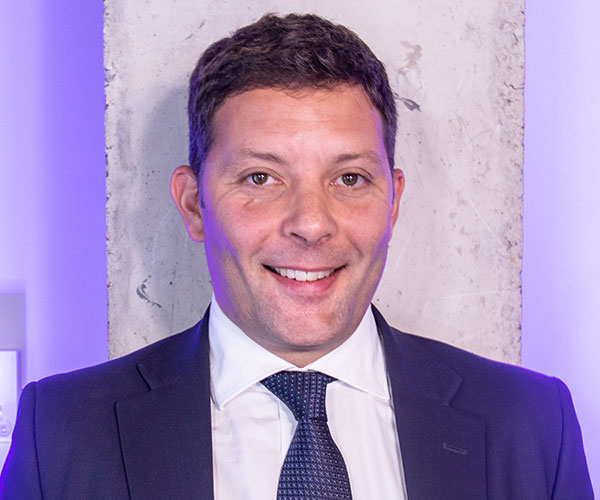Value and active managers poised for comeback



The polarisation of the UK stock market – between domestic and international earners and between value and growth stocks – has moved to extremes not seen during the careers of many of the professional investors around the table.
Following volatility in markets in August, including a correction for equities as the US-China trade war escalated, the divergence between the equities seen as safe havens or bond proxies and those that are value names became even more stretched.
‘It’s certainly as extreme as I’ve ever seen it,’ said Invesco fund manager James Goldstone, who started his career in equity sales 18 years ago.
He suggested a number of reasons for the divergence, chief among them economic uncertainty: ‘In a low growth world and with economic uncertainty in the UK, there was a justification for stocks that are less exposed to those issues to trade at a higher valuation and stocks that are very exposed to trade at a lower valuation,’ he said.
The amount of money that is being invested in algorithmic strategies, which look for stock characteristics such as low volatility, positive price momentum and quality, is another factor.
‘Those strategies are so dominant in marginal trading that they’ve pushed the valuations of all of the businesses that tick those boxes to quite frankly previously unthinkable levels,’ said Goldstone, giving the example of Spirax-Sarco Engineering, which has seen its price/earnings ratio go from 10 times earnings to more than 30 times in ten years.
‘At the same time, they’ve either ignored or actively shorted the businesses that are exposed to the UK or that seem more exposed to this low growth world. There are lots of domestic businesses that are out of favour – I’ve just bought AIG at 3.5 times forward earnings.’
A 30%-odd return
For Goldstone, the dispersion in valuations fails to reflect the purpose of investing – to put money to work based on the economic fundamentals of a business and deliver total returns to investors.
‘Actually, this is much more than just a Brexit phenomenon – it’s a whole value versus growth phenomenon and it’s affecting not just UK-dominated businesses in the UK market,’ he said.
A large number of stocks have been de-rated to such an extent that a rerating is unnecessary for investors to get a decent total return.
‘A stock on 3.5 times earnings has a 33% earnings yield,’ said Goldstone. ‘We’re all trying to manage portfolios to deliver 10% over the very long term – that would be a phenomenal result.
‘There are shares available today that are going to give you a 30%-odd return on an earnings yield basis or as a proxy for free cashflow and some of that comes back in dividends and some of it just accretes to the balance sheet. At that end of the valuation spectrum, they’re so cheap you don’t even need the rerating for them to look like attractive investments.’
Such stocks act as good diversifiers in portfolios, according to Paul Wharton, Tacit Investment Management’s chief investment strategist. ‘When things go badly wrong, they’re so badly beaten they’re already down there,’ he said. ‘You don’t need much to go right to get a rerating.’
Mike Hollings, a partner in Shard Capital, agreed: ‘So much bad news is priced in that it gives you that margin of safety.’
Active managers to the fore
For Matt Hoggarth, head of research at Thesis Asset Management, a return to the discipline of ‘buying assets and earnings at decent prices’ would herald an era in which active managers can shine.
‘We saw it in 2000 and 2001, where the tech bubble had inflated to such a large extent and you could buy safe and boring companies on very low earnings multiples and everybody was ignoring them, but actually, for the subsequent period, those were the stocks to buy,’ he said.
‘It gets to the nub of things that buying low, selling high always works. Active managers have to come back to the fore and begin to deliver using these sorts of stocks that are so beaten up and offer such excellent potential.’
Smith & Williamson partner James Burns equally regards this is an important period for active managers in the investment industry.
Huge swathes of money have gone into passives in the last decade – a strategy that has largely proven the most profitable, particularly in the UK. That’s because dollar earners have driven UK stock market growth, pushing international growth stocks ever higher and virtually no UK equities fund manager has had enough in them to outperform the market.
‘It’s very, very important for the sake of active management in the UK, but globally as well, that we actually see some performance coming through,’ said Burns. ‘This is the time, in the next three years, that it really has to come to the fore again.’
Buying bombed out areas
Operational improvements coupled with cheap valuations make the oil and mining sectors ripe for stock-picking. James holds over 8% in oil and gas (between BP and Royal Dutch Shell, which are both top ten holdings) and around 9.4% in various gold miners across Keystone Investment Trust and Invesco Perpetual Select Trust Plc (UK Equity Share Portfolio) has 8.8%.
‘Valuations [of the oil majors] are so rock bottom and these are really good businesses now,’ said Goldstone, who runs the UK equities portfolio of the trust. ‘We’ve gone from a period where they were very bad businesses that never made any more money when the oil price went up than when it was at a lower level. They’ve repositioned, got capex under control, got costs under control and the break-even rates are now sufficiently low to give me confidence that dividends are absolutely safe.’
Likewise, gold mines are in better shape, both operationally and in terms of capital discipline. ‘In the same way that BP and Shell are no longer building projects with low returns, the gold companies are doing exactly the same thing,’ said Goldstone.
‘In making those investments in the miners, I’ve not felt I had to take too brave a view because the valuations and free cashflow yields, at today’s gold price, for the ones I hold are between 6% and 20% on a two-year view.
‘It feels a bit like an insurance policy that I’m being paid to hold. I don’t think I’m going to get burgled, but I buy home contents insurance every year. I don’t necessarily believe that the whole global economic system is going to fall in on itself or that Saudi Arabia and Iran will go to war or that the US dollar is going to lose its reserve currency status. They’re all things worth considering, but I don’t need to believe any of them will necessarily happen for these businesses to generate a really attractive total return.’
